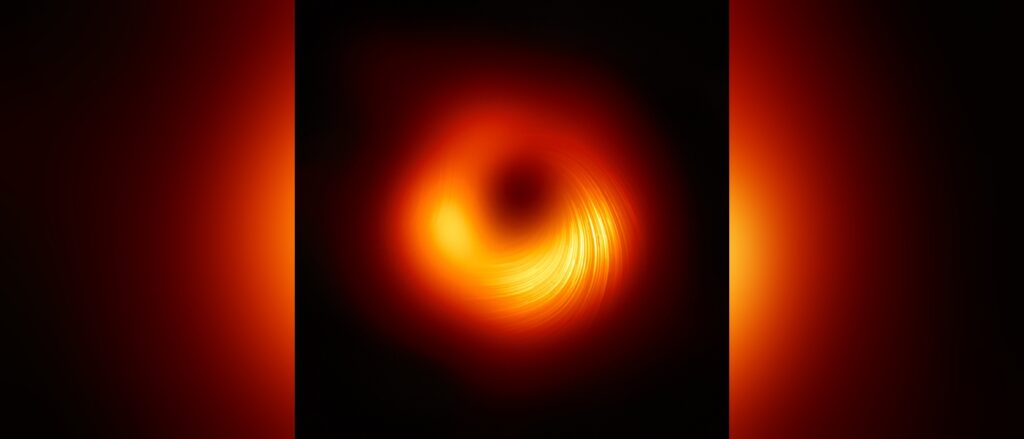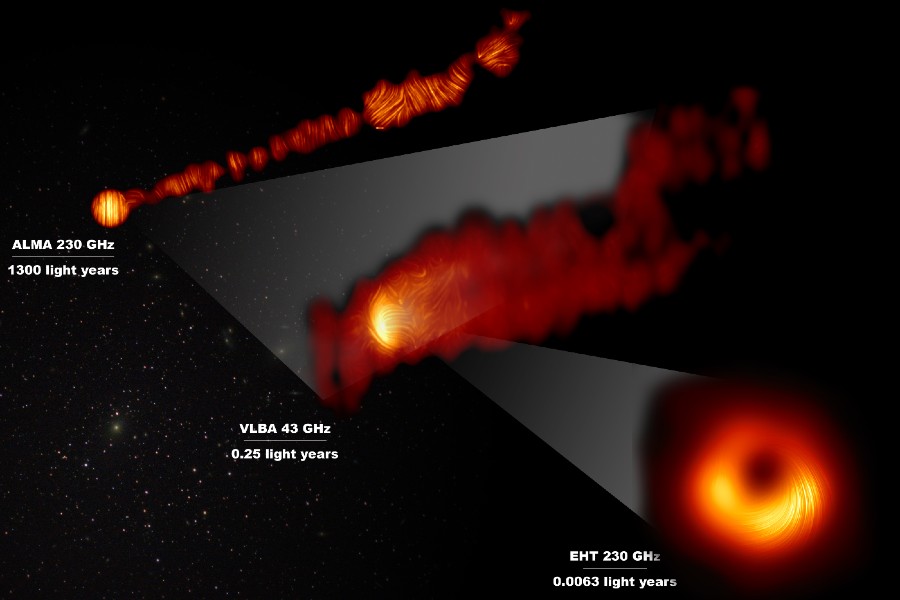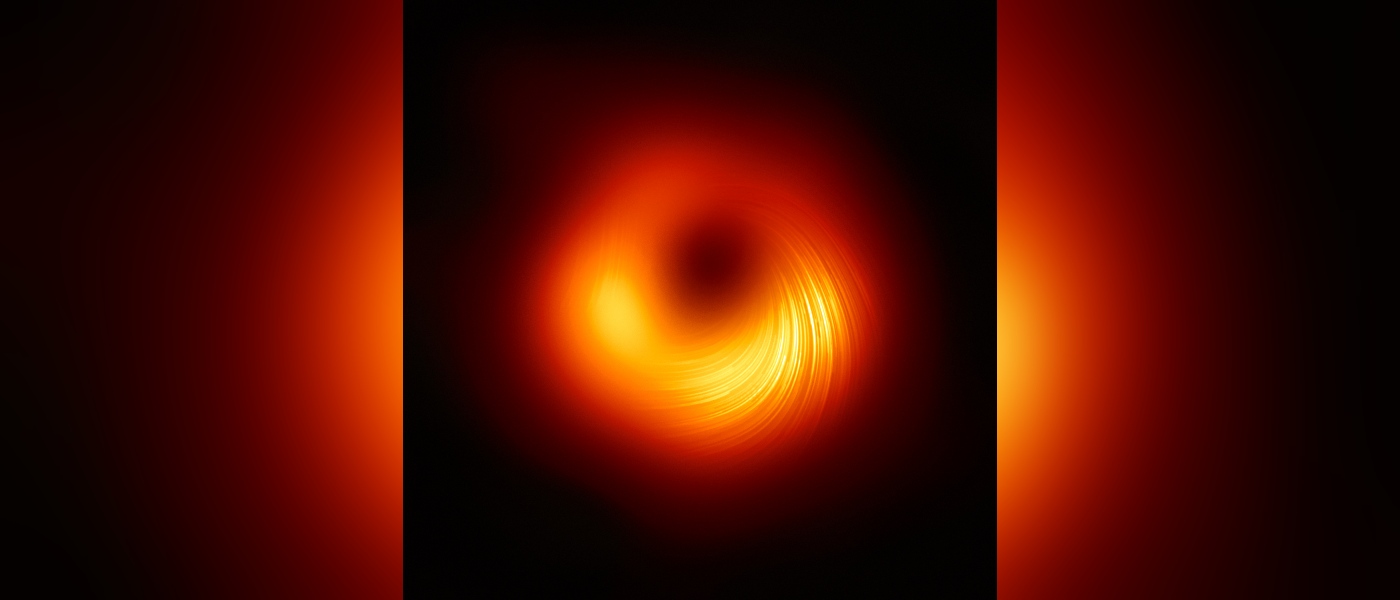
A new view of the region closest to the supermassive black hole at the center of the galaxy has shown important details of the magnetic fields close to it—and hints about how powerful jets of material can originate in that region.
A worldwide team of astronomers using the Event Horizon Telescope (EHT) measured a signature of magnetic fields—called polarization—around the black hole. Polarization is the orientation of the electric fields in light and radio waves, and it can indicate the presence and alignment of magnetic fields.
The new images allowed scientists to map magnetic field lines near the edge of Messier 87’s (M87’s) black hole, and are a key to explaining how the black hole, 50 million light-years from Earth, can launch energetic jets from its core.
The black hole at M87’s center is more than 6 billion times more massive than the Sun. Material drawn inward forms a rotating disk—called an accretion disk—closely orbiting the black hole.
Most of the material in the disk falls into the black hole, but some surrounding particles escape and are ejected far out into space in jets moving at nearly the speed of light.
“The newly published polarized images are key to understanding how the magnetic field allows the black hole to ‘eat’ matter and launch powerful jets,” said Andrew Chael, a NASA Hubble Fellow at the Princeton Center for Theoretical Science and the Princeton Gravity Initiative in the U.S.
MORE: Hawking’s 50-Year Mystery About Falling into Black Holes Has Finally Been Solved
The scientists compared the new images that showed the magnetic field structure just outside the black hole with computer simulations based on different theoretical models. They found that only models featuring strongly magnetized gas can explain what they are seeing at the event horizon.
CHECK OUT: Biggest Bang Since ‘The Big Bang’ Creates a Black Hole Science Says Should Not Exist
“The observations suggest that the magnetic fields at the black hole’s edge are strong enough to push back on the hot gas and help it resist gravity’s pull. Only the gas that slips through the field can spiral inwards to the event horizon,” explained Jason Dexter, Assistant Professor at the University of Colorado Boulder and Coordinator of the EHT Theory Working Group.

To make the new observations, the scientists linked eight telescopes around the world to create a virtual Earth-sized telescope, the EHT. The impressive resolution obtained with the EHT is equivalent to that needed to measure the length of a credit card on the surface of the Moon.
RELATED: ‘Unprecedented’ New Photos of the Sun’s Surface Are Being Hailed as Landmark Achievement for Science
This resolution allowed the team to directly observe the black hole shadow and the ring of light around it, with the new image clearly showing that the ring is magnetized. The results are published in two papers in the Astrophysical Journal Letters.
As the EHT collaboration continues to do more work on what’s just happening around us in space, we’ll be sure to let you know their latest findings.




















